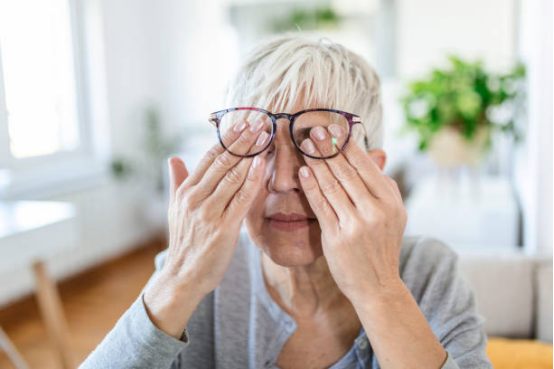10 Key Indicators of Thyroid Eye Disease
Thyroid Eye Disease (TED), also known as Graves' ophthalmopathy, is an autoimmune condition that affects the eyes and the tissues around them. It is commonly associated with thyroid disorders, particularly hyperthyroidism and Graves' disease. Early recognition of TED symptoms is crucial for effective management and treatment, as the condition can lead to significant eye discomfort and, if left untreated, vision impairment. Here are 10 common signs of Thyroid Eye Disease that patients and healthcare professionals should watch out for:
Thyroid Eye Disease (TED), also known as Graves' ophthalmopathy, is an autoimmune condition that affects the eyes and the tissues around them. It is commonly associated with thyroid disorders, particularly hyperthyroidism and Graves' disease. Early recognition of TED symptoms is crucial for effective management and treatment, as the condition can lead to significant eye discomfort and, if left untreated, vision impairment. Here are 10 common signs of Thyroid Eye Disease that patients and healthcare professionals should watch out for:

1. Proptosis (Bulging Eyes)
One of the most notable symptoms of thyroid eye disease is proptosis, or the bulging of the eyes. This occurs when the tissues around the eyes swell, causing them to protrude from their sockets. The condition can lead to dry eyes, increased irritation, and significant discomfort. As the eyes become more prominent, patients may struggle to fully close their eyelids, which can worsen dryness and irritation.
2. Periorbital Swelling (Edema)
Swelling or puffiness around the eyes, known as periorbital edema, is another common sign of TED. It often affects the eyelids and the surrounding tissues. This swelling is due to the inflammation triggered by the autoimmune attack on the tissues around the eyes. It may cause difficulty in closing the eyes, which can be painful and lead to further complications, such as dryness and irritation.
3. Foreign Body Sensation
Patients with TED frequently experience a gritty or sandy sensation in their eyes, similar to the feeling of having something foreign stuck in the eye. This is primarily caused by dryness and irritation, as the immune system disrupts normal tear production. The feeling of a foreign body is often exacerbated by blinking, rubbing, or moving the eyes, and can lead to significant discomfort throughout the day.
4. Reduced Tear Production
Decreased tear production is another hallmark of thyroid eye disease. This condition, also known as keratoconjunctivitis sicca, occurs when the autoimmune attack impairs the function of the tear glands. As a result, patients may experience persistent dryness, redness, blurred vision, and discomfort. Dryness can be particularly bothersome in windy or dry environments, worsening the symptoms of TED.
5. Double Vision (Diplopia)
Diplopia, or double vision, is a common symptom in TED patients. It occurs when the eye muscles become inflamed or weakened, leading to improper alignment of the eyes. This misalignment causes patients to see two separate images of a single object, which can interfere with daily tasks such as reading, driving, and watching television. If double vision persists, it is crucial to seek medical attention for proper treatment.
6. Eye Pain and Pressure
Pain and a feeling of pressure behind the eyes are frequent complaints among those with thyroid eye disease. This discomfort is often linked to increased inflammation, swelling, and the compression of the optic nerve. Patients may describe the pain as a dull ache, or in some cases, a sharp, stabbing sensation. The discomfort can become more pronounced during eye movement or after prolonged periods of eye strain.
7. Lagophthalmos (Inability to Close Eyes Completely)
Lagophthalmos is a condition where the eyelids are unable to close fully, often due to proptosis or eyelid retraction. This leaves a portion of the cornea exposed, which increases the risk of dryness, irritation, and even corneal damage. Without proper treatment, lagophthalmos can lead to chronic dryness and inflammation, making it essential for patients to seek medical intervention to protect their eyes.
8. Photophobia (Light Sensitivity)
Photophobia, or sensitivity to light, is another common symptom of thyroid eye disease. Patients with TED may find it difficult to tolerate bright lights due to the increased dryness and irritation of the cornea. This sensitivity can lead to squinting, discomfort, and avoidance of well-lit areas, severely affecting the patient's quality of life. Managing photophobia is an important part of TED treatment.
9. Changes in Vision
As thyroid eye disease progresses, it can lead to significant changes in vision. Patients may experience fluctuating or blurred vision, making it harder to focus on objects. This can be caused by irregularities in the cornea, muscle dysfunction, or even pressure on the optic nerve. Vision changes can significantly impact a patient's ability to perform everyday activities, underscoring the need for prompt treatment to prevent further deterioration.
10. Eyelid Retraction (Wide-eyed Appearance)
Eyelid retraction is a condition where the upper or lower eyelids are pulled back, causing the eyes to appear unusually wide or "staring." This symptom is common in thyroid eye disease and can cause discomfort due to excessive exposure of the cornea. The retraction may also alter the facial appearance, making the patient look more alert or startled. In addition to cosmetic concerns, eyelid retraction can lead to dryness and irritation, which requires careful management.
Conclusion
Thyroid Eye Disease is a complex condition with a range of symptoms that can affect the eyes and surrounding tissues. From the hallmark sign of proptosis to more subtle symptoms like photophobia and eyelid retraction, recognizing these telltale signs early can lead to more effective treatment and better outcomes. If you experience any of these symptoms, especially if you have a thyroid disorder, it is important to consult with a healthcare professional. Early intervention can help manage symptoms, preserve vision, and prevent long-term damage to the eyes.